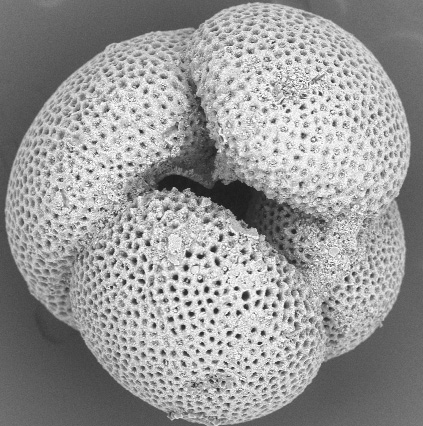
Foraminifera: Predictors of Past Climates, contributor Marci Robinson
Foraminifera are single-celled micro (very small) planktonic animals (they eat plankton) with perforated (holed) shells made of calcium carbonate (CaCO3 i.e. chalk). Most kinds are marine (live in the ocean), and when they die, their shells form thick ocean-floor sediments.
What are Planktic Foraminifera?
Planktic foraminifera (forams for short) live in the upper zone of the ocean. These creatures (indicating a period in geological time) are distributed worldwide, but found only in the open ocean. When they die, they settle to the bottom of the ocean. Planktonic forams tell us about past ocean currents and climates.
Who Studies Foraminifera and Why?


Planktic foraminifera species in sediment cores record the environment at the ocean surface. Each species lives in a certain range of temperature and salinity (the saltiness), so we can tell the temperature and/or salinity in the past by looking at which species were living there at that time. In the Bay of Bengal, the temperature doesn’t change much, but the salinity varies based on monsoon activity which can add a lot of fresh water to the surface through rain and river drainage. We look at the fossil foraminifera to see how monsoon activity (in terms of surface ocean salinity) has changed over time.
So How Do We Collect and View Foraminifera?



